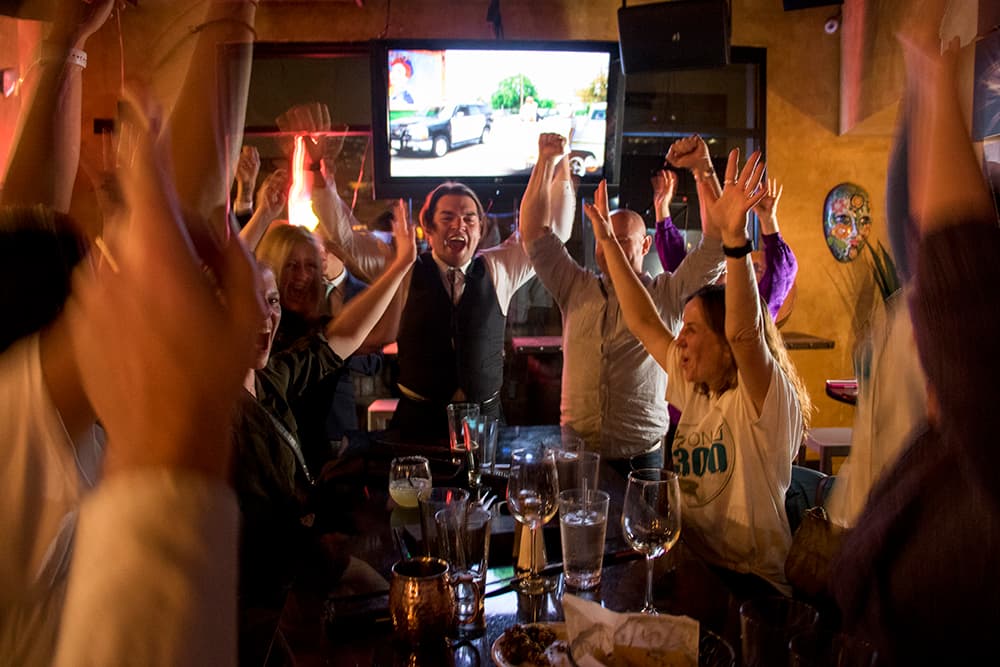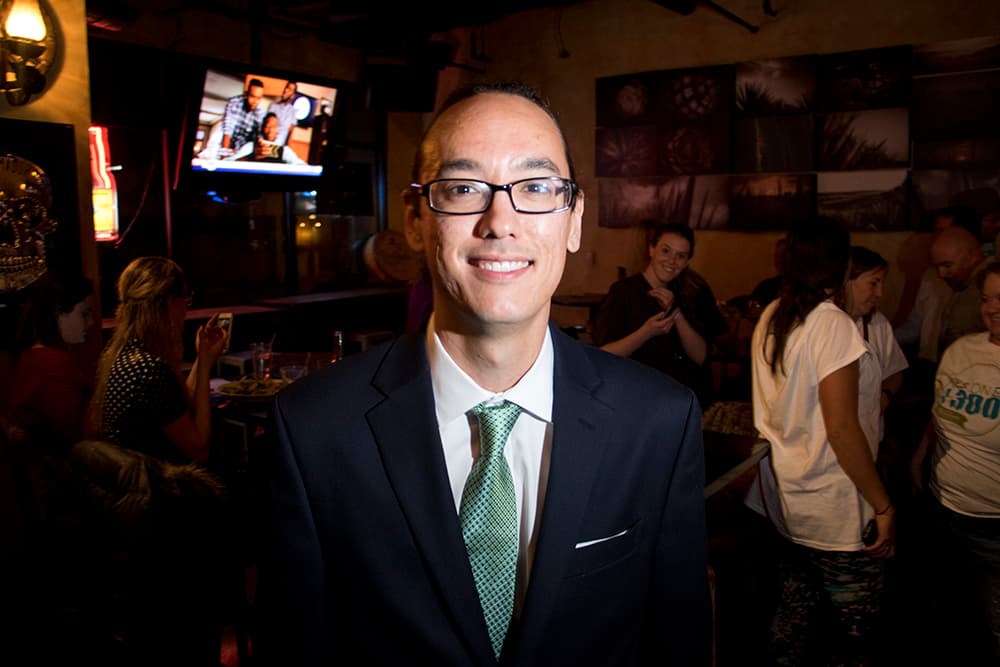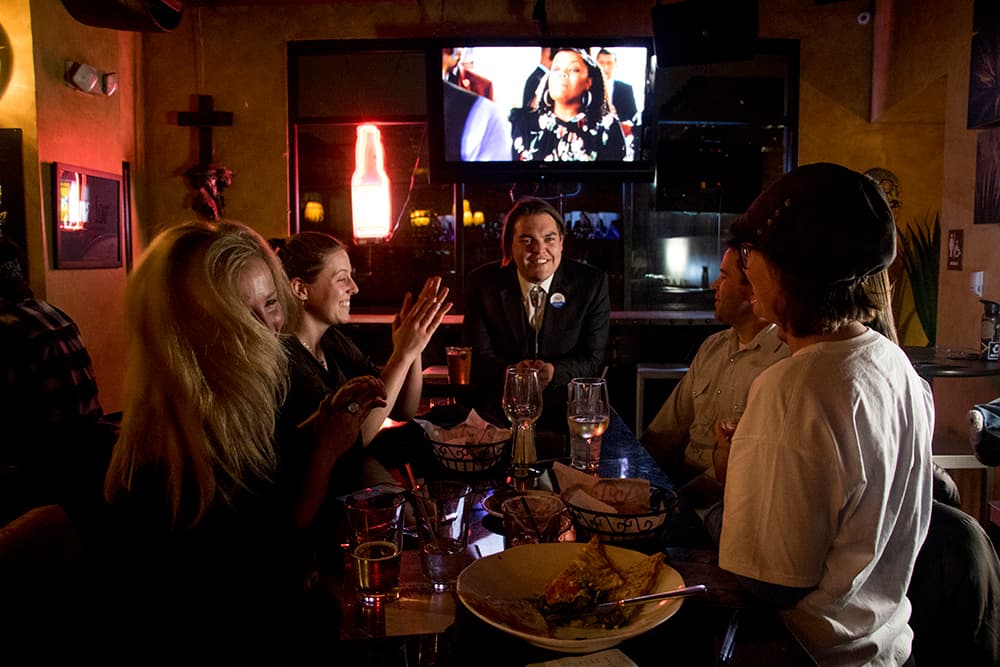
It seemed like environmental activists and green-minded builders might succeed on Tuesday night in their unlikely quest to require rooftop vegetation on large new buildings in Denver.
As of 3 p.m. Wednesday, 52.5 percent of voters favored the green roof initiative, with roughly 107,000 ballots counted. The lead was about 5,200 votes, and it grew each time new results were posted.
A Denver Elections spokesperson warned last night that the count still had a long way to go. According to the Secretary of State's Office, Denver voters had returned at least 137,016 ballots.
Still, proponents grew increasingly confident.
"We're still up!" a supporter exclaimed as another round of results reached a watch party at 100% de Agave, a Mexican cantina off Broadway. "We did it! We did it!" came another shout an hour later.

"We're realistic enough to accept the fact that it has passed," said Kathy Barstnar, executive director of Colorado's commercial real estate development association and a leader of the no campaign, on Wednesday morning.
The volunteer campaign kept the race close despite a severe financial disadvantage. Opponents of the measure, including real-estate and development interests, raised about $250,000 -- more than 11 times as much as the environmentalists did -- as of Nov. 1, according to finance reports.
Barstnar said opponents were too slow in getting out their message that the initiative would have unintended consequences and raise housing costs.
"I’m lovin’ it. I’m still a little apprehensive," green-roof organizer Brandon Rietheimer said Tuesday evening. "I didn't know what to expect."

If results hold, Denver would be one of the first U.S. cities to require green roofs. San Francisco has a similar law, while Washington D.C. has some green roof requirements related to stormwater control, according to National Geographic.
Mayor Michael Hancock had previously said that the ordinance goes "too far." But Council President Albus Brooks on Tuesday said that Denver's elected leaders would "do the will of the people."
Ean Thomas Tafoya, a former city council candidate who helped run the green roof campaign, said that he had knocked on 1,000 doors personally and that the group had propelled itself on volunteer power.
"I think the environmentalists are waking up," he said.
Emily Huebener, a volunteer, said the vast majority of people she spoke to during the campaign were supportive.
"I've been dreaming about it happening, and I've been losing sleep," she said as she waited on further results. Like several others at the watch party, she said that the campaign was a chance to finally put her ideals into action.
Nam Henderson, also a volunteer, credited good timing and clear messaging for the campaign's performance.
"It's something most people in an off-cycle election in a largely Democratic city can get behind," he said.

The proposal:
Initiative 300 would require that buildings 25,000 square feet or larger devote a certain percentage of their rooftop to gardens and solar panels. The larger the building, the more of the roof that would have to be set aside -- up to 60 percent.
The owners of existing buildings could get a waiver and pay a fee in lieu of installing a green roof at the time of roof replacement if their building was not engineered to withstand the additional weight of a green roof.
The Denver City Council could modify or repeal the potential new law after six months, but it would require a two-thirds majority vote on the council. See Erica's explainer for more.
The arguments:
Opponents of the measure described it as a wasteful requirement that would make construction even more expensive.
"We want to keep Denver affordable while working to ensure a strong economy. I-300 is a foolish mandate that will drive up costs and make Denver’s market even more expensive," the group's website said. They could not immediately be reached for comment on Tuesday.
One expert told Denverite that green roofs cost about 2.5 times more than conventional roofs to install, but they last four to five times longer and make buildings less expensive to run.
Supporters argued that green roofs could lower electricity bills by absorbing the extra heat that collects in urban areas. The vegetation areas also could improve air and water quality and produce food, they argued.
"Lowering the city’s urban heat island effect would promote cooler days and less energy consumption throughout every building in Denver," the supporters wrote.

The supporters:
The Denver Green Roof Initiative was largely funded by small donations, anywhere from $10 to $200. The biggest-name supporter was Zeppelin Development, a company known for its sizable developments in River North.
The initiative was led by Rietheimer, an environmental activist and self-employed maker and seller of lapel pins. He also had support from green-roof installers and the nonprofit Green Roofs for Healthy Cities.
The opponents:
Real-estate and development interests rallied against the initiative, with the National Association of Realtors giving almost $50,000 and the Apartment Association of Metro Denver giving $40,000.
Influential business groups such as the Denver Metro Chamber of Commerce and the Downtown Denver Partnership also were opposed.
The Colorado Rockies Baseball Club gave money in opposition, according to campaign finance reports for the Citizens for a Responsible Denver opposition group, and the dispensary chain Native Roots was listed as an opponent too.
Erica Meltzer contributed to this report.










